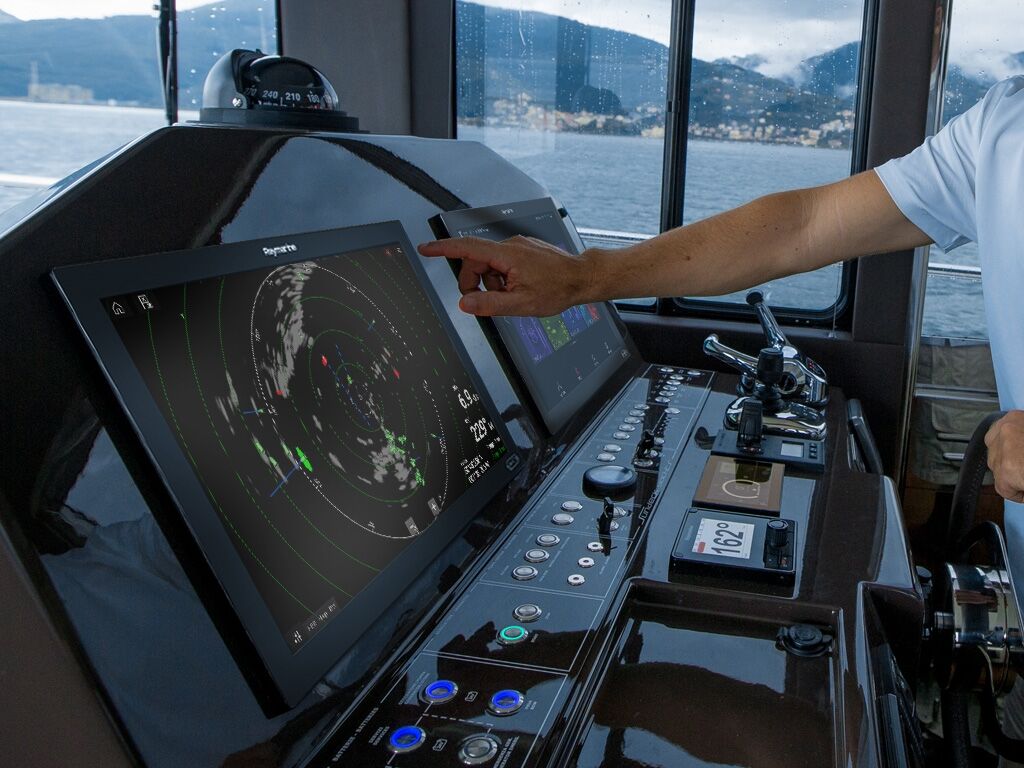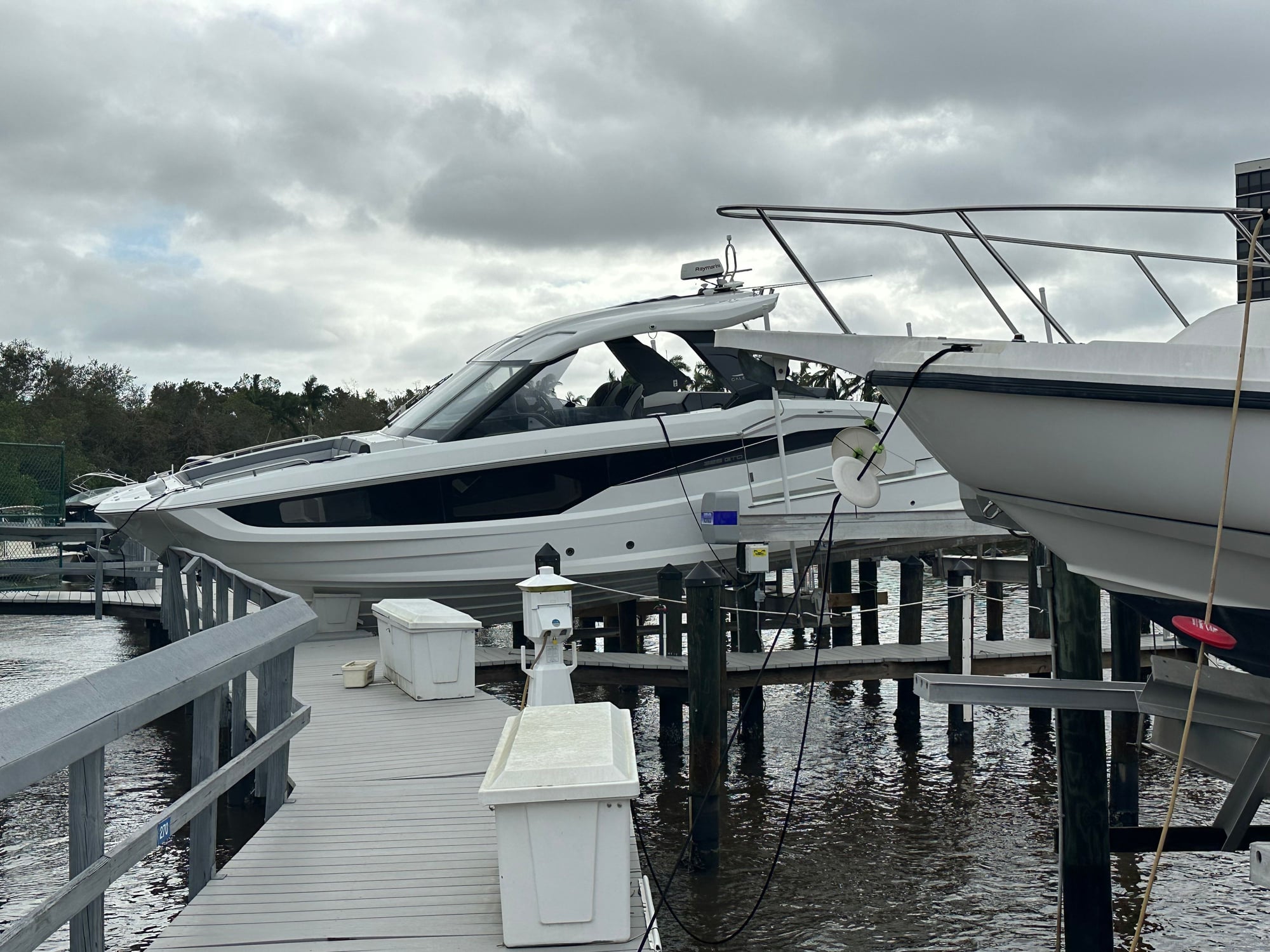Bow of a Ship: Essential Parts and Functions Explained
The bow of a ship refers to the forward part of the hull, which is the part that usually leads the way as the vessel moves through the water. It plays a crucial role in reducing the resistance of the hull as it cuts through the water while also ensuring that water does not easily wash over the deck. There are different types of bow designs, each with its advantages and features that cater to various ship functions and sizes.
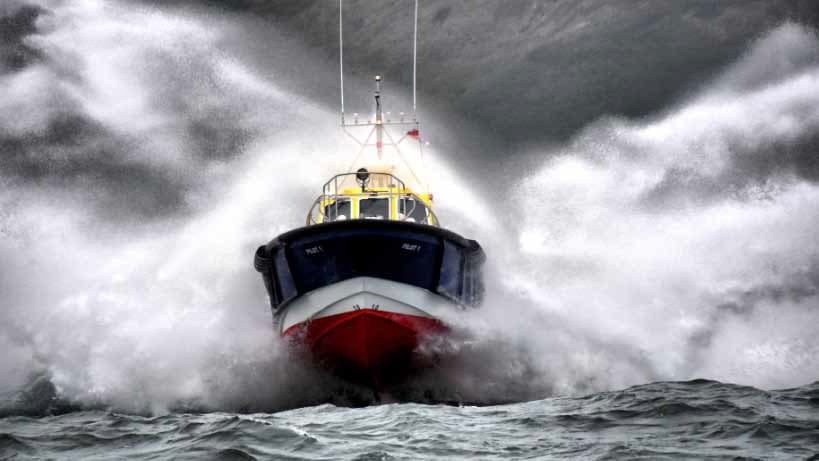
While the design of a ship's bow might seem straightforward, there's actually a lot of science and engineering involved in its formation. The shape of the bow can have a significant impact on the ship's fuel consumption, navigational capabilities, stability, and even the overall performance in different weather conditions. As a result, shipbuilders and naval architects pay close attention to the bow design in order to optimize the vessel's performance and ensure safe and efficient operations at sea.
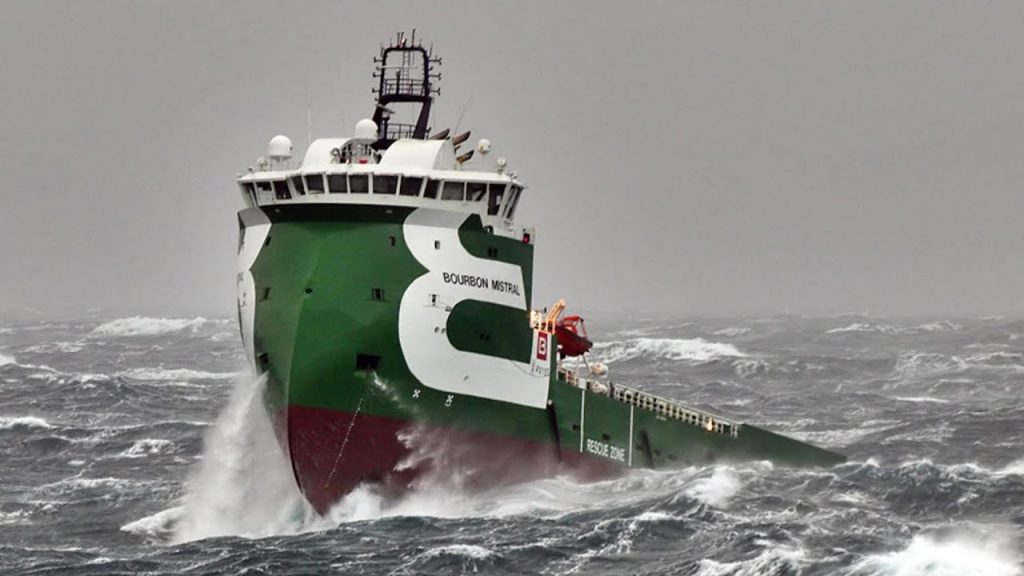
Key Takeaways
- The bow is the forward part of a ship's hull, crucial for reducing water resistance and preventing water from washing over the deck.
- Various bow designs cater to different ship functions, sizes, and navigational requirements.
- The science and engineering behind bow design are essential for optimizing a ship's performance, stability, and fuel efficiency.
Part of a Ship: The Bow
The bow is the forward part of a ship's hull, designed to cut through the water as a vessel moves forward. Being the most forward point of a ship when it is underway, the bow plays a crucial role in reducing resistance and ensuring smooth navigation. In addition, a ship's bow has to maintain sufficient height to prevent water from splashing on top of the vessel easily 1.
One common feature seen in modern ships is the bulbous bow, a protruding bulb at the bow below the waterline 2. This unique design alteration significantly enhances the ship's performance by modifying the way water flows around the hull. The benefits of a bulbous bow include reduced drag, increased speed, improved fuel efficiency, and better overall stability.

Apart from the bow's functional aspects, it also serves as an aesthetic feature. Ships often have different bow types, with each design catering to various purposes and operational requirements. Some common types of bows include the flare, clipper, raked, plumb, and inverted bows, among others. Each bow type offers specific advantages, such as increased water displacement or improved hydrodynamic properties.
In conclusion, the bow is an essential part of a ship, playing both an aesthetic and functional role. Being the foremost part of the vessel, it is designed to minimize drag and resistance while maintaining adequate height to keep water from easily washing over the ship. With advancements in ship design, features like the bulbous bow have further improved overall vessel performance, contributing to increased speed, range, and fuel efficiency.
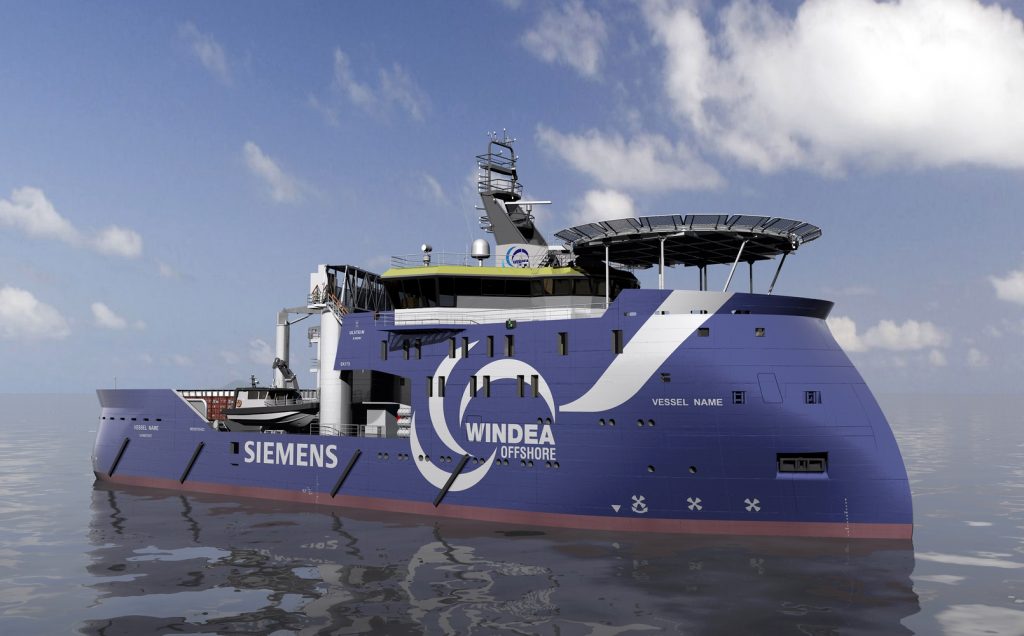
Types of Ship Bows
Ship bows are designed to optimize the vessel's performance for various tasks, keeping in mind factors like speed, stability, and maneuverability. There are several types of bows utilized in modern ship design, each with distinct characteristics.
The bulbous bow is a popular design that features a bulb-like protrusion at the waterline, which helps reduce wave resistance. This innovation improves fuel efficiency and increases the vessel's cruising range, particularly at high speeds and in fully loaded conditions.
Another notable design is the inverted bow, also known as the axe bow. This design is characterized by a backward-slanting stem and is primarily used for high-speed vessels. The shape of the inverted bow reduces water resistance, enhances stability, and provides better control, especially in rough sea conditions.
The raked bow is a classic design featuring a forward-slanting stem, also known as the rake. This design provides increased buoyancy, which is essential for maintaining the ship's stability in rough seas. Raked bows were historically used in sailing ships and are still employed in modern vessels where they serve both functional and aesthetic purposes.

Plumb bows are characterized by a vertical stem, which results in a straight-edged appearance. Plumb bows are mainly used for slow-moving vessels as they offer more cargo space. However, their straight-edge design generates a considerable amount of drag, making them less suitable for high-speed ships.
The spoon bow is a gentle, curving design that smoothly transitions from the stem to the waterline. This elegant shape offers reduced wave resistance and increased stability, making it a popular choice for luxury yachts and passenger ships.
In addition to these, there are several specialized bow designs, such as the parabolic bow and cylindrical bow. These models are tailored for specific purposes, focusing on attributes like stability and fuel efficiency. For example, the parabolic bow is designed to minimize the ship's wave-making resistance, making it highly efficient for higher speeds.
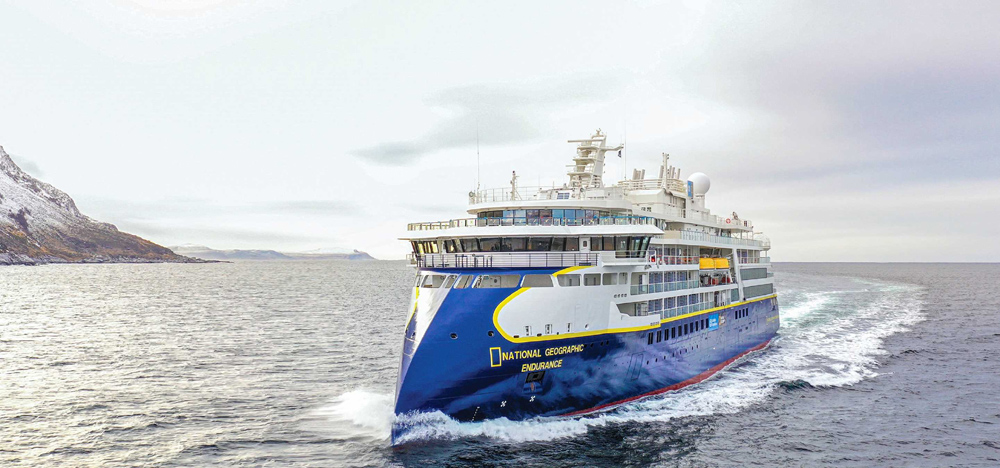
The X-bow is another innovative design that boasts improved fuel efficiency and stability in rough sea conditions. This design is characterized by a steep, sloping stem that extends above the vessel's foredeck, allowing waves to flow smoothly over the bow, minimizing the impact of slamming.
The clipper bow, a historical favorite among sailing ships, is a slender, raked bow with a forward-curving tip. This elegant design prioritizes speed and agility, making it a superb choice for fast sailing vessels.
In conclusion, the diversity of ship bow designs showcases the unique requirements of different types of ships. From the efficiency-focused bulbous bow to the graceful lines of the clipper bow, each design has its merits and challenges, and sailors across the world rely on them to navigate the vast oceans safely.
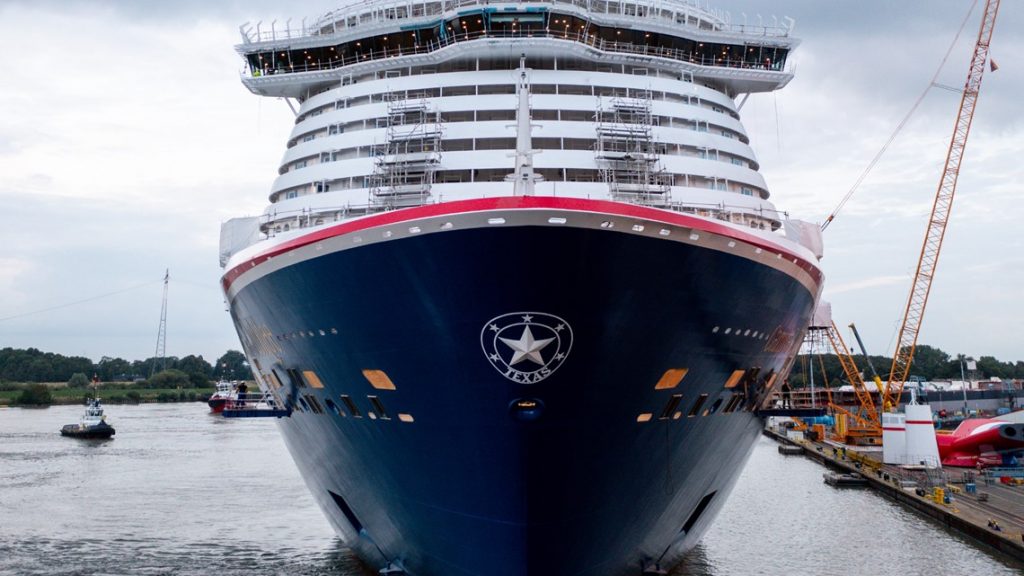
The Science Behind Bow Design
The design of a ship's bow is an essential aspect of maritime engineering, as it directly affects the vessel's performance, efficiency, and safety. Bows are the forward part of a ship's hull, where the stem meets the waterline, and play a significant role in reducing resistance and ensuring buoyancy when the ship is in motion.
One of the primary goals of bow design is to minimize the ship's wave-making resistance. When a ship moves through water, it creates waves at the bow, which increases energy loss and reduces efficiency. An efficient bow design helps to decrease pitching and slamming effects while maintaining a stable freeboard that ensures smooth sailing, even in rough seas.
Bulbous bows consist of a protruding bulb at the bow's stem, designed to enhance the ship's hull speed and reduce wave-making resistance by 12-15%. The bulbous bow works by creating a trough that reduces the wave generated by the bow's edge, leading to less energy lost to the water. These designs are most effective at the ship's normal cruising speed, with little effect at lower speeds.
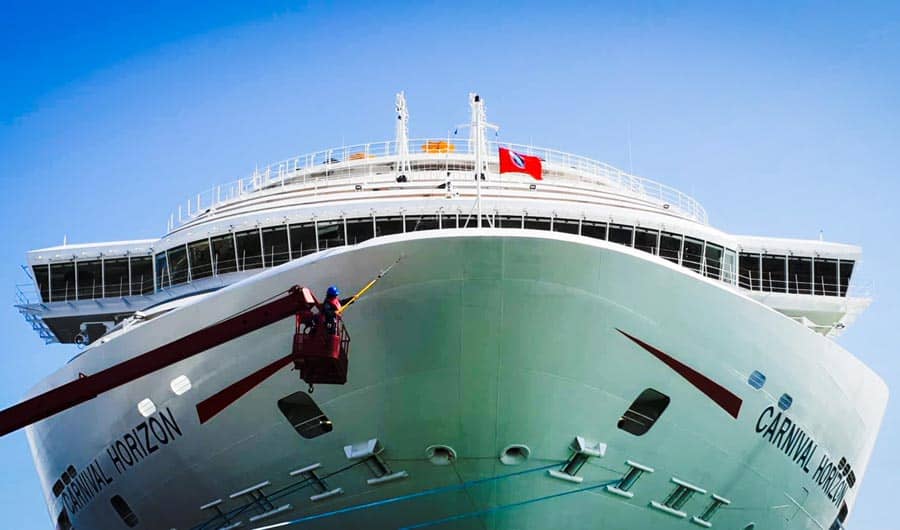
Parabolic and cylindrical bows, along with axe bows, are other types of bow designs developed to optimize hydrodynamic parameters for a ship. Parabolic bows have a curvature that helps maintain the ship's stability and reduce wave-making resistance. Cylindrical bows have a vertical forward face that promotes smooth water flow, whereas axe bows have sharp angles that offer increased speed and fuel efficiency in certain conditions as mentioned here.
The dimensions of a bow design are critical, as they impact both wave-breaking resistance and wave-making resistance, directly affecting the ship's performance. Designers must strike a balance between the vessel's size, weight, and functionality, considering factors such as the ship's purpose, area of operation, and desired efficiency.
In conclusion, the science behind bow design plays a crucial role in the performance and efficiency of a ship. By optimizing factors such as resistance, buoyancy, flare, and freeboard, various bow designs cater to specific needs within the maritime industry. Engineers and naval architects continually strive to develop new and innovative designs that push the boundaries of technology and performance.
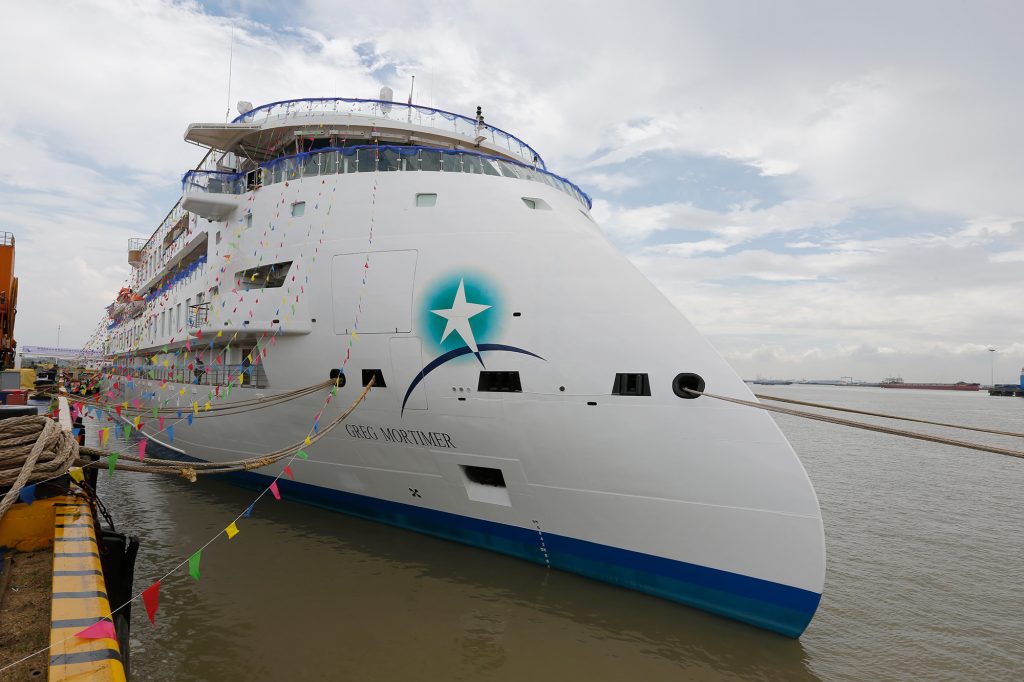
The Role of Bow in Ship Navigation
The bow of a ship plays a crucial role in navigation, as it is the forward-most part of the vessel which comes into contact with the water. The bow's streamlined shape is designed to minimize resistance when cutting through waves, efficiently reducing drag and enhancing fuel efficiency.
A ship's bow is also instrumental in managing a vessel's transit through rough water. The design of the bow allows it to intersect waves effectively, mitigating the resistance components and ensuring a smoother ride. There are different types of bows optimized for specific ship categories, ensuring improved performance in speed, stability, or comfort, depending on the requirement.
The prow is another term used to describe the forward-most part of the bow, specialized to perform optimally in varying conditions. Bows with flared designs help a ship deal with large waves, directing them outwards and minimizing the impact of seawater on the vessel's hull. Flared bows are particularly advantageous in large cruise ships and naval vessels that encounter rough seas.

The bow section also houses essential navigation aids, such as navigation lights that facilitate visibility during nighttime or poor weather conditions. These lights help other vessels to discern ships' direction and orientation, promoting safe navigation and collision avoidance.
In addition to its hydrodynamic functions, the bow of a ship is often equipped with a bow thruster, designed to assist in maneuvering the vessel. Bow thrusters are fitted in ships with high LOA (Length Overall) and GRT (Gross Register Tonnage), using lateral propulsion to enable more precise control in tight spaces or in adverse environmental conditions.
Lastly, it is pertinent to mention that the ship's rudder, although not located at the bow, plays a vital role in conjunction with the bow during navigation. The rudder allows a ship to steer by changing the flow of water around the vessel's hull, controlling its direction.
In summary, the bow is an indispensable component of ship navigation and its design has a tremendous impact on hydrodynamic efficiency, effective wave handling, and overall safety. It also serves as a platform for essential equipment and aids contributing to successful transit and maneuvering.
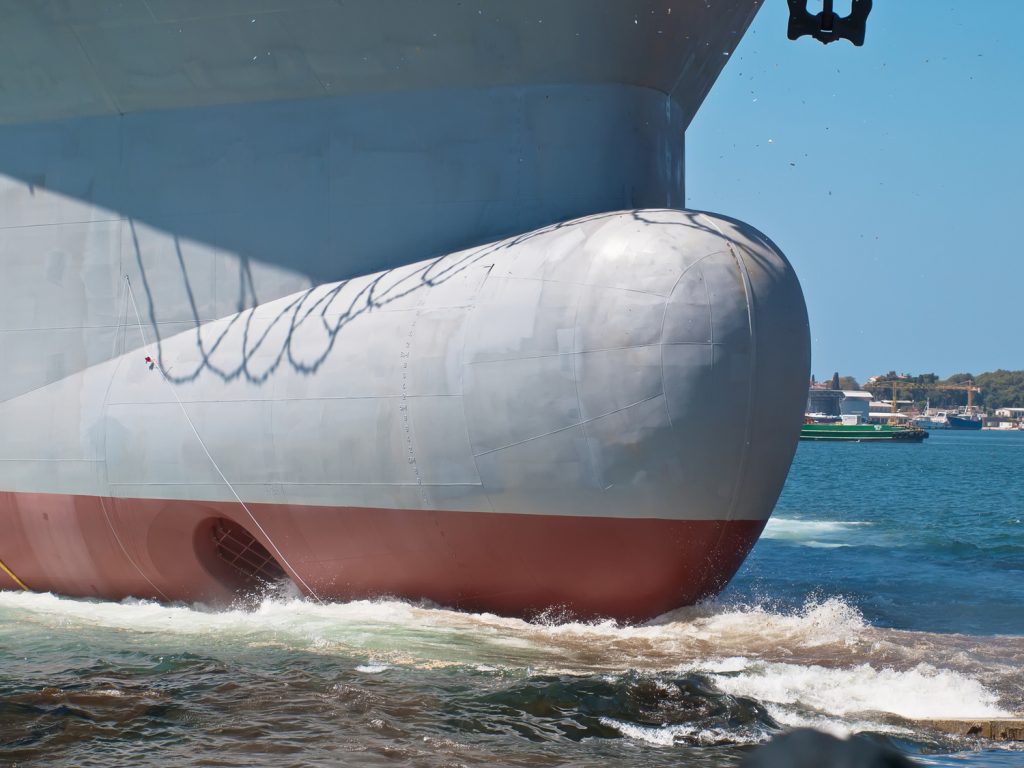
Structural Aspects of Bow
The bow is the forward-most part of a ship that slices through the water as the vessel moves. It is designed with specific dimensions and shape to counteract incoming waves, reducing overall resistance and the power needed to propel the vessel forward 1. In addition, the bow plays a critical role in the seaworthiness of a ship and affects its buoyancy and stability.
The hull is the main body of the ship where the bow is located. It is constructed of several components, including the keel, girders, and bulkheads, that provide structural integrity and strength to the vessel. The keel is considered the backbone of the ship. It runs from the bow to the stern, and its primary function is to provide stability, strength, and support to the overall structure of the ship [^4^].
The waterline length of a vessel is the length of the boat at its designed waterline, the level where water meets the ship's hull. It is a crucial parameter for defining the hydrodynamic aspects of a ship, including buoyancy, stability, and wetted surface resistance. This measurement is essential for determining the ship's performance and seaworthiness.
The bow's shape and dimensions depend on the type of ship and its function. Some commonly used bow shapes include flared, raked, and inverted bows each, designed for specific performance factors such as enhancing the vessel's speed, reducing spray, or increasing buoyancy 2.
On either side of the bow, you will find the port and starboard sides, which refer to the left and right side of the vessel, respectively. This distinction is crucial for navigation and communication purposes during a voyage.

The mast, located near the bow on some vessels, is responsible for supporting the sails, rigging, and communication equipment. It plays a significant role in maintaining the ship's forward motion when propelled by wind power.
Lastly, the propeller, situated at the vessel's stern, is responsible for converting the engine's rotational power into thrust, propelling the ship forward. Its efficiency is affected by the bow's design, as the shape of the bow dictates how water flows towards the stern and propeller. This highlights the importance of an optimally designed bow for achieving overall efficiency in a ship's movement.
In conclusion, understanding the structural aspects of the bow in relation to other critical components of a ship is important for achieving the optimal vessel performance. A well-designed bow contributes significantly to the efficiency, stability, and overall performance of a ship, making it an essential aspect of naval architecture.
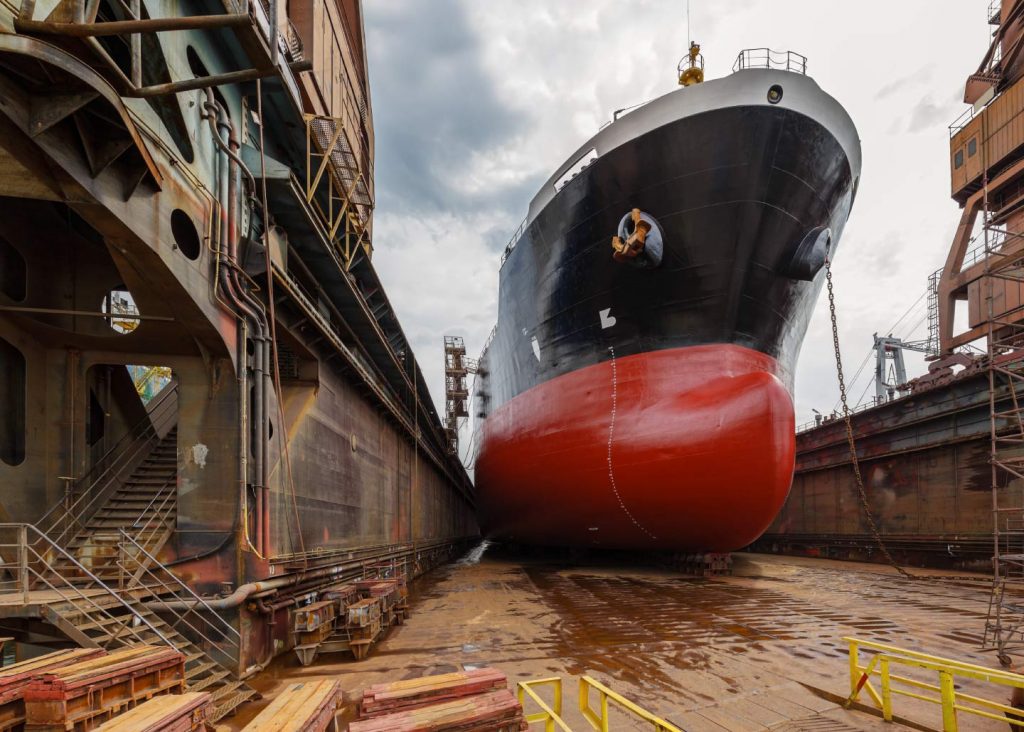
Bow and Shipbuilding Industry
The bow is the forward part of a ship's hull and plays a significant role in the shipbuilding industry, given its importance in a vessel's performance and aesthetics. The design of the bow affects the resistance a vessel faces while moving through water, thereby impacting the vessel's speed and efficiency. Several factors influence the choice of bow design, including the type of vessel, its intended purpose, and industry trends.
Shipbuilding encompasses a wide variety of vessels, ranging from large commercial ships like tankers to smaller leisure crafts such as yachts. The bow designs for these ships vary significantly in order to meet the operational requirements of different vessel types. In the tanker industry, for example, bulbous bows are widely used to reduce the hydrodynamic resistance and improve fuel efficiency. On the other hand, yachts are often designed with raked or clipper bows being aesthetically appealing and suitable for their purpose.
Advancements in technology and machinery have led to the development of innovative bow designs that can address emerging challenges in the shipbuilding industry. For instance, the Axe bow is a wave-piercing design which features a hull with a vertical stem, resulting in a longer and narrower entry. This design has been proven effective in various ship types such as offshore supply vessels, reducing pitching and slamming motions in rough seas.
The choice of bow design is also influenced by the expertise of the ship's master, who must evaluate the vessel's performance based on various factors, including its ability to cut through waves, stability, and fuel consumption. A well-designed bow will not only improve the vessel's performance but also contribute to a safer and more comfortable journey for crew and passengers.
In conclusion, the bow plays a crucial role in the shipbuilding industry, with its design being a major aspect determining a vessel's performance and aesthetics. As the industry continues to evolve and develop, new designs and technologies will be introduced to enhance the capabilities of various types of vessels. Mastering the intricacies of bow design is essential for shipbuilders and masters alike to ensure optimal vessel performance and maintain a competitive edge in a rapidly changing world.

Bow Design Impact on Different Types of Ships
The bow is a prominent structure at the front of a ship, designed to navigate through water efficiently and withstand various forces encountered at sea. Bow designs can significantly impact different types of ships, such as yachts, tankers, and other watercraft. This section will discuss how various bow designs affect these vessels.
Bulbous bows are common on large ships like tankers, cargo ships, and cruise ships. The bulbous protrusion at the waterline reduces drag and improves the hydrodynamic efficiency of the ship, allowing it to travel at higher speeds with less fuel consumption. For tankers specifically, this design reduces their operating costs and makes them more environmentally friendly by decreasing greenhouse gas emissions.
In contrast to the bulbous bow, the axe bow is a wave-piercing design, developed by the Dutch shipbuilding group Damen. This design has been widely adopted by yachts and offshore supply ships, as it is characterized by a sharp, narrow shape that cuts through waves instead of riding over them. The axe bow enables the vessel to maintain higher speeds in rough conditions, improving comfort and safety for those on board.
Clipper bows are another design often found on yachts, as well as traditional sailing vessels. Their upward curvature offers additional buoyancy, helping the ship ride over waves and preventing plunging – the tendency to submerge the bow under the surface of the water. This design is suited for long-distance sailing, as it provides stability and comfort for the crew.
The spoon bow, on the other hand, is designed with a curved shape that smoothly transitions from hull to bow, reducing the disturbance of water flow around the ship. This design is popular for its aesthetic appeal and is prevalent in pleasure crafts and smaller watercraft. While this shape may not provide the same stability as the clipper or axe bows in rough conditions, it offers a combination of aesthetics and practicality for the users.
Lastly, parabolic bows, used in some modern tankers, have a parabolic profile that improves hydrodynamics. With similar characteristics to cylindrical hulls, this bow design can effectively decrease wave resistance, improve sea-keeping, and increase vessel efficiency when combined with a bulb.
In conclusion, bow designs play a crucial role in determining the performance, efficiency, and safety of various types of ships, including yachts, tankers, and watercraft. From bulbous bows for large vessels to clipper and axe bows for yachts, each design delivers its unique set of advantages and disadvantages, depending on the ship's purpose and operating conditions.
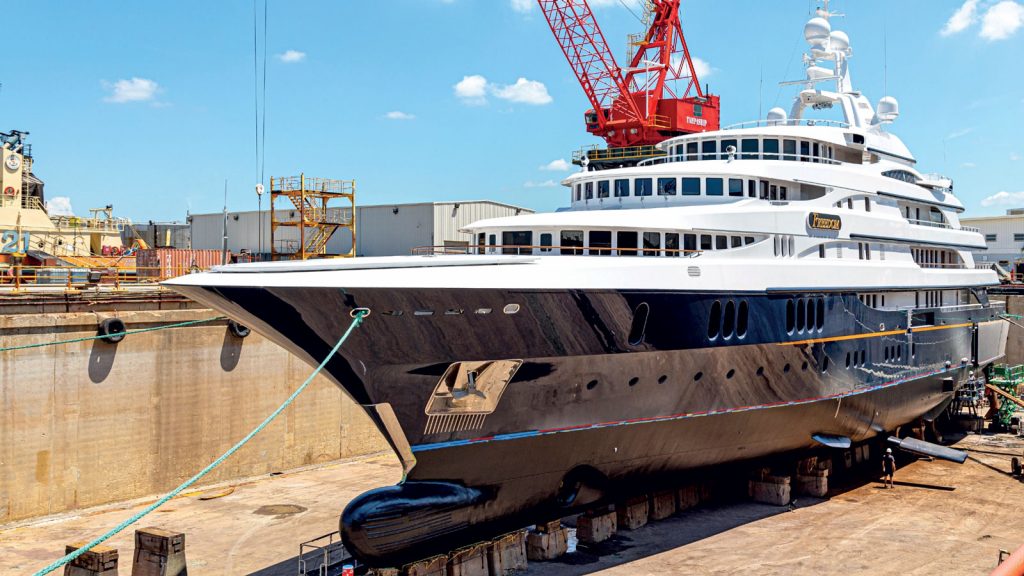
Historical and Modern Significance of Bow
The bow, which is the forward part of a ship's hull, has played a crucial role in the history of maritime technology and design. In ancient times, the bow's primary purpose was to navigate through water efficiently and withstand various forces encountered at sea. One prominent historical feature of the bow is the figurehead, a carved decorative piece typically representing a person, animal, or mythical creature. Figureheads were not only decorative elements but also served as symbols of power, protection, and prestige for the ship and its crew [1].
In the past, different types of bows were designed for specific purposes. For example, during the Victorian era, the ram bow emerged as an offensive weapon, while bluff bows were common on wooden sailing vessels [2]. As maritime technology advanced, the design of bows evolved to adapt to new challenges and improve ship performance.
In the 20th century, the bulbous bow emerged as a highly effective performance enhancer. This type of bow, characterized by its protruding bulb shape, is now commonly found on modern cruise ships, container ships, LNG carriers, and research vessels. The bulbous bow not only improves hydrodynamic efficiency but also reduces fuel consumption and enhances overall sailing performance [3].
Today, the bow of a ship continues to be an essential part of its design, combining both form and function. Engineers and naval architects carefully consider the specific requirements of each vessel in designing the bow to suit its intended use. As a result, modern bows can be seen in various shapes and sizes, tailored to each ship's purpose and operating environment.
In conclusion, the bow's historical and modern significance lies in its essential role in navigation, efficiency, and performance at sea. From figureheads to bulbous designs, the evolution of the bow reflects a continual pursuit of improvement in the maritime industry. With ongoing advancements in technology and new challenges in the world of shipping, the bow will undoubtedly continue to be at the forefront of future marine engineering and design innovations.
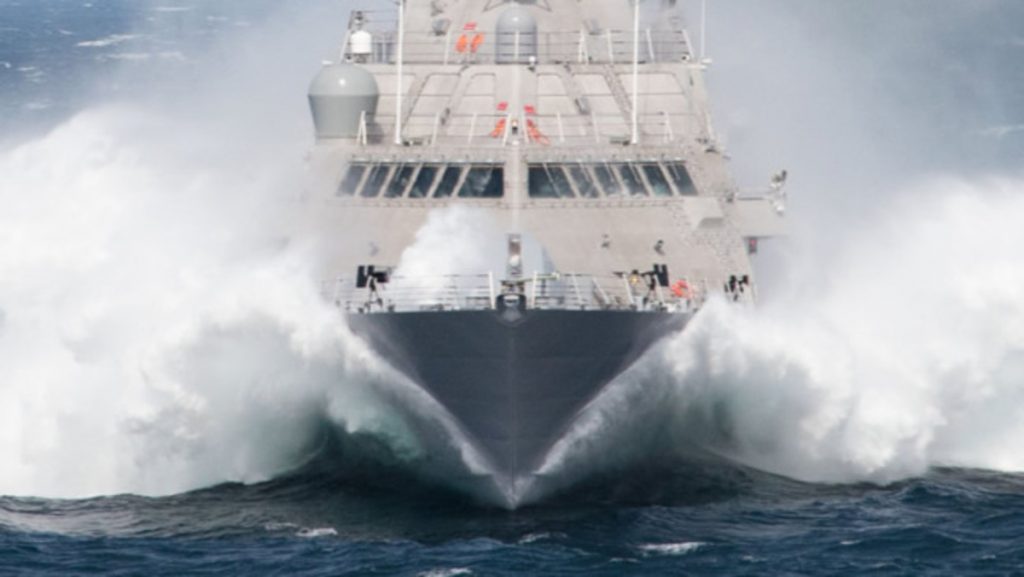
Bow in Different Conditions
In various conditions, especially when a ship is fully loaded, the bow design plays a crucial role in ensuring safety and efficiency. A well-designed bow allows the vessel to cut through the waves, reducing water resistance and resulting in a smoother journey. Different bow designs are tailored for specific situations, both domestic and international.
In fully loaded conditions, the bow's design must account for higher resistance against the water, especially in larger vessels. For instance, the bulbous bow is a common design on large cargo ships and tankers. This type of bow features a protruding bulb below the waterline, which creates a favorable pressure wave ahead of the ship, consequently reducing the drag and enhancing energy efficiency.
Ships navigating in areas with continuous slopes or rough seas require a bow design that can handle the unpredictable wave impacts. The axe bow is a suitable choice in such conditions, with its slender, elongated form allowing the ship to maintain speed and stability while minimizing the slamming effect caused by large waves.
In domestic shipping, vessels are designed to cater to coastal and short-distance routes. These ships may favor a raked bow, which is shaped with a backward leaning angle. This design offers more buoyancy when the ship encounters waves, providing a comfortable journey for passengers and ensuring the safety of the cargo.
International shipping, on the other hand, involves navigating longer distances and diverse water conditions. Vessels engaged in international routes often utilize a more advanced bow design, such as the inverted bow. This innovative design offers improved seakeeping in rough seas, increased speed, and reduced fuel consumption, making it an ideal choice for performing in various sea states and regions.
In summary, the bow design greatly impacts a ship's performance, safety, and efficiency in different conditions. Selecting an appropriate bow design tailored to the vessel's purpose, operating environment, and specific conditions, such as fully loaded scenarios, slopes, and both domestic and international routes, is vital for optimal performance.
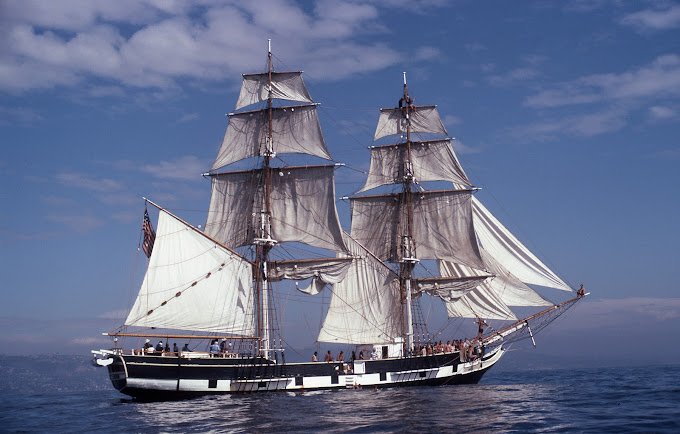
Miscellaneous Components Related to Bow
The bow of a ship plays a crucial role in its overall performance and design. It navigates through water, providing stability and reducing resistance. Besides its shape and design, several other components are related to a ship's bow. In this section, we will discuss some of these components, specifically focusing on the anchor and accommodation areas.
The anchor is an essential part of a ship, responsible for holding it in place when stationary, especially in ports or at sea during unfavorable conditions. Anchors are typically located at the bow, allowing the ship to face the wind or current and maintain stability. Various types of anchors are used, depending on ship size and type, and the conditions under which they operate. Some common types of anchors include the stockless anchor, Danforth anchor, and grapnel anchor.
Another vital aspect related to the bow of a ship is the accommodation area. The accommodation refers to the living quarters for the crew, including cabins, mess rooms, and recreation spaces. This area is generally situated towards the stern or middle of the ship, but in some cases, it may extend towards the bow, especially on smaller vessels or specialized ships, such as research vessels. The accommodation area design also considers safety, providing crew members with an escape route to the bow in case of emergencies, minimizing the risk of encountering hazards such as fires or heavy smoke. Ensuring safety, comfort, and convenience for the crew is crucial in designing and maintaining ship accommodation areas.
In summary, the bow's design and shape contribute significantly to a ship's performance. Various components interact with the bow, such as the anchor and accommodation areas, ensuring secure anchorage and a safe and comfortable living space for the crew. Attention should be given to these components to maintain overall quality and safety standards in maritime operations.
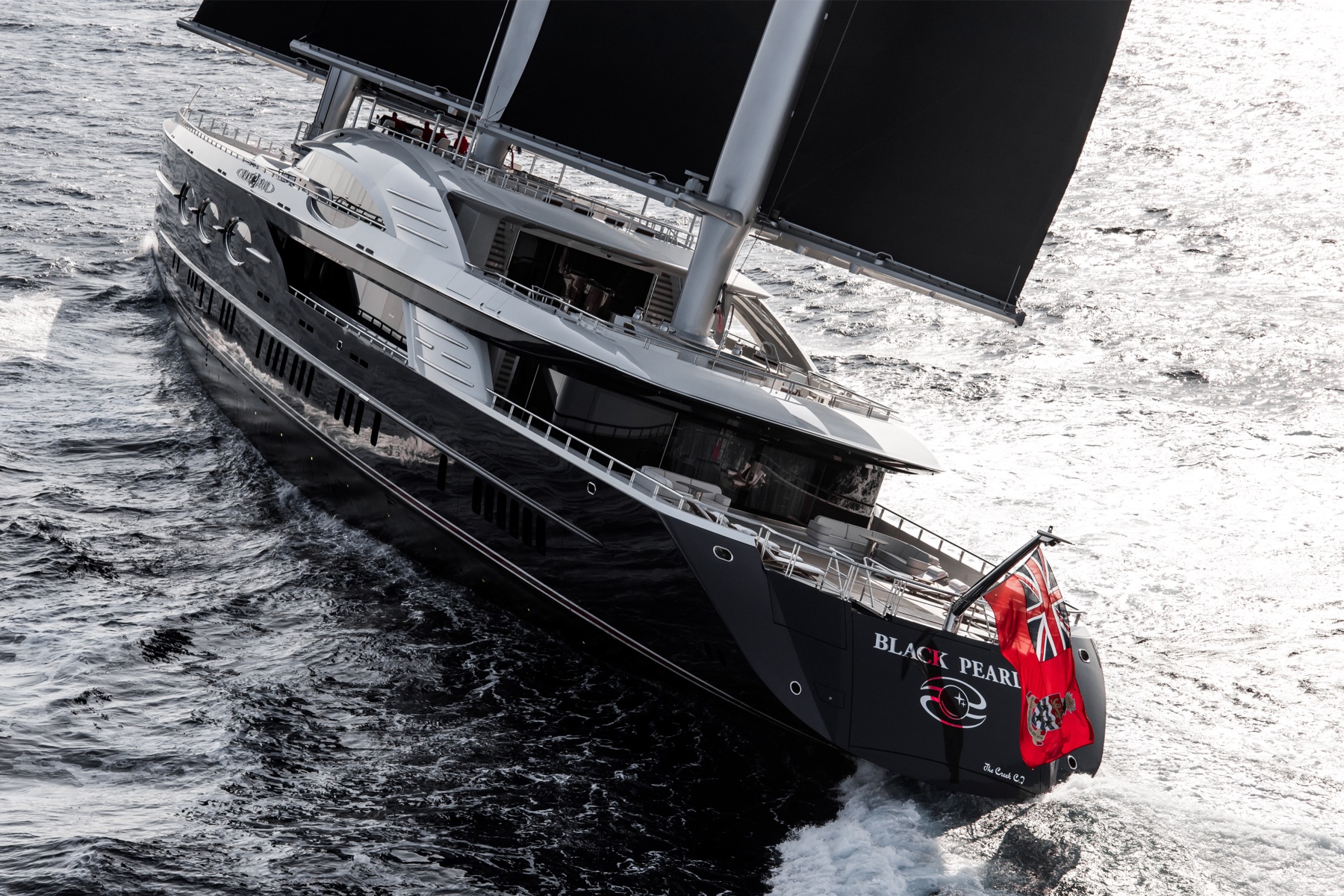
Frequently Asked Questions
What is the purpose of a bulbous bow?
A bulbous bow is a protruding structure at the forward-most part of a ship's hull, designed to improve its hydrodynamic performance by reducing resistance. This innovative bow configuration allows ships to move more efficiently through water, which in turn leads to fuel savings and a reduction in environmental impact. The bulbous bow has proven to be particularly beneficial for larger vessels such as cargo ships and cruise liners.
How does the shape of a ship's bow affect its performance?
The shape of a ship's bow plays a vital role in its overall performance, including speed, stability, and maneuverability. Different bow designs are engineered to optimize specific aspects of a ship's performance, such as reducing drag, cutting through waves efficiently, or providing added stability in rough seas. Ultimately, the choice of bow shape depends on the vessel's intended function and the conditions it is expected to encounter.
What is the difference between the bow and the stern?
The bow refers to the forward part of a ship's hull, while the stern is the aft or rear end of the hull. These two terms are used to describe the orientation of various components and systems on board. The bow typically features a more streamlined and pointed shape to facilitate efficient movement through water, while the stern is often broader and flatter, designed to accommodate propulsion systems and other essential equipment. You can find more information about these terms in this Wikipedia article.
Why is the bow important for ship stability?
A well-designed bow contributes to a ship's overall stability by influencing its motion through water. An optimized bow shape allows the vessel to cut through waves with minimal resistance, enhancing both speed and stability. Furthermore, some advanced bow configurations, like the bulbous bow, can even help to dampen the ship's pitching motion in rough seas, making for a more comfortable and stable experience for those on board. Here's an article that explores different parts of a ship and their importance in stability.
What are the materials commonly used for ship bows?
Materials for ship bows are chosen based on factors such as strength, durability, and resistance to corrosion. Commonly used materials include steel (particularly for larger ships), aluminum (for lighter weight and high-speed vessels), and fiberglass (for smaller recreational boats). Modern composite materials, such as carbon fiber, are also becoming more popular in the marine industry due to their strength-to-weight ratio and resistance to harsh environments.
How has bow design evolved over time?
Bow design has come a long way, from the early vertical or plumb bows to the more modern inverted, bulbous, and axe bows. The evolution of these designs has been driven by a desire for increased efficiency, speed, and stability in varying sea conditions. Additionally, new materials and construction techniques have allowed for the creation of more advanced, lightweight, and durable bows. For a detailed examination of different bow designs and their evolution over time, you can refer to this insightful article from Marine Insight.
Footnotes
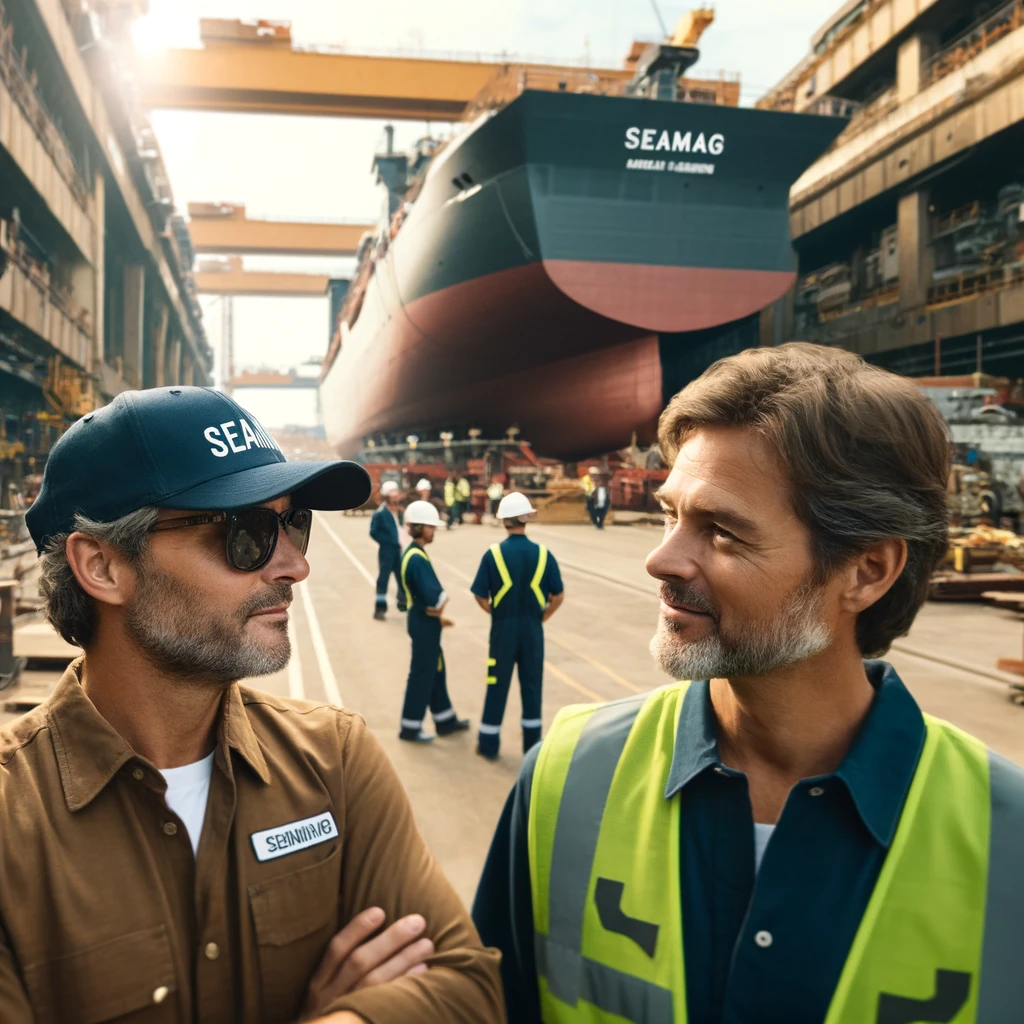
Q&A With Ship Buiders
Charlie: Good afternoon, Art. Thanks for joining me today to talk about your latest ship designs at Heavy Duty Industries.
Art: Hi Charlie, it's great to be here. Thanks for having me.
Charlie: Let's dive right in. Your company has recently launched a new boat called the Ocean Sprinter, and it features an innovative bow design. Can you describe the shape of the bow?
Art: Absolutely. The Ocean Sprinter has a plumb bow, which means it has a more vertical bow than traditional ships. This vertical design is quite pointed or tapered, which helps in cutting through the water smoothly, reducing the bow wave.
Charlie: Interesting. What are the advantages of using a plumb, vertical bow over, say, a flared bow?
Art: A plumb bow, due to its pointed or tapered shape, helps achieve greater hull speed. The vertical alignment allows the boat to displace water more efficiently, which is crucial for high-speed maritime travel. In contrast, a flared bow is more about handling waves and providing more space on deck.
Charlie: Speaking of handling waves, how does the Ocean Sprinter manage that with its boat bow design?

Art: The tapered shape of the bow also plays a critical role in how water interacts with the ship’s hull. By channeling the water smoothly along the port side and starboard, the ship can maintain stability and speed even in rougher seas.
Charlie: That sounds quite innovative. How does this design impact the space available inside the ship?
Art: That’s one of the unique challenges. While a vertical bow doesn’t offer as much space as a flared bow, we’ve optimized the interior design to maximize space. The tapered shape may reduce some potential space forward, but it contributes significantly to the vessel's overall performance and efficiency.
Charlie: It seems like a balanced approach between performance and comfort. How has the market reacted to the new design?
Art: The response has been very positive, especially among clients who value speed and efficiency. They appreciate how the bow cuts through water and the benefits that the design brings to fuel efficiency and speed.
Charlie: It’s fascinating to see how bow designs can influence so many aspects of a ship's performance and utility. Art, thank you for sharing these insights today.
Art: Thank you, Charlie. It was a pleasure discussing our work with you and your readers at Sea Magazine.
Charlie is Editor-in-Chief of Sea Magazine




